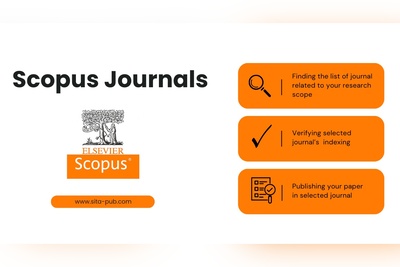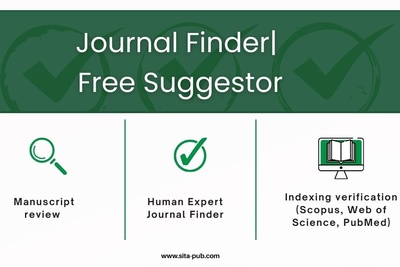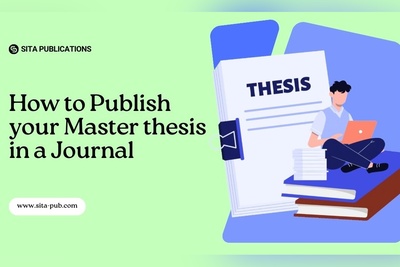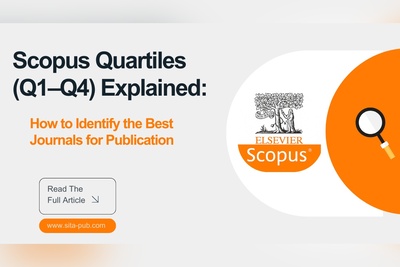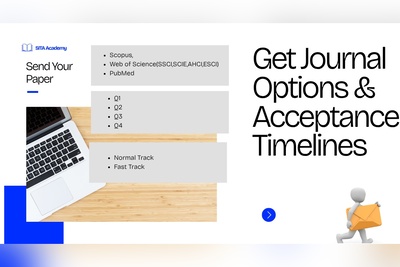Web of Science (SCI, SCIE, ESCI) Publication Assistance
Learn the difference between SCI, SCIE, and ESCI journals, their impact factors, publication fees, and timelines. Get professional Web of Science publication assistance with verified indexing, formatting, submission, and peer-review support.
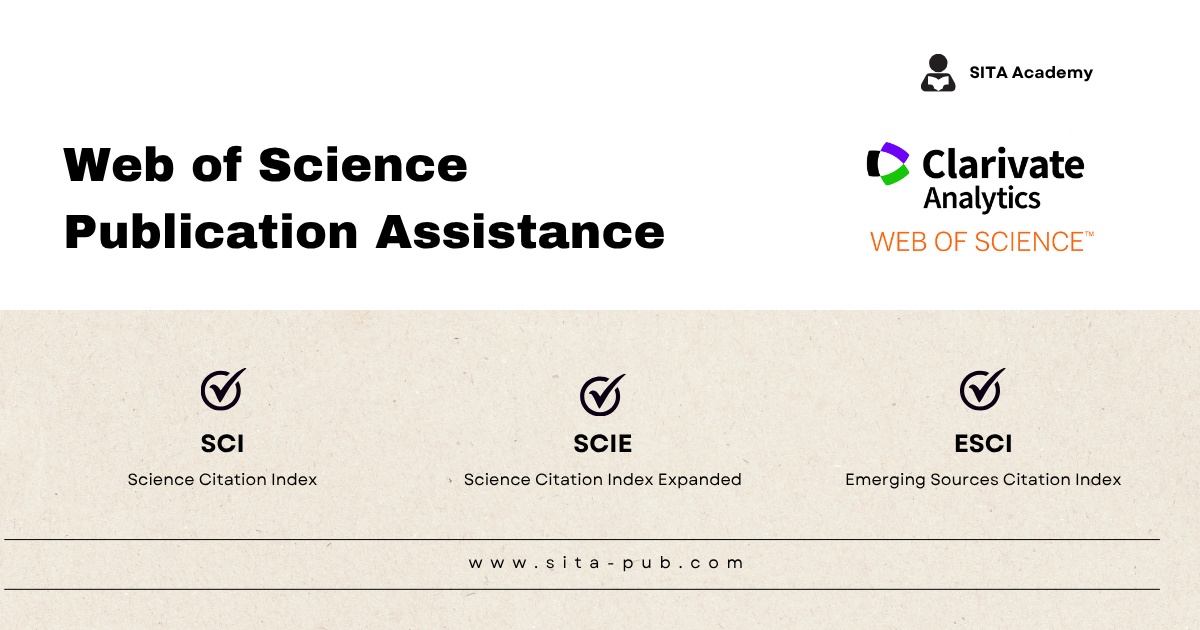
Publishing in a Web of Science (WoS) indexed journal is one of the most valuable achievements for researchers and postgraduate students. Managed by Clarivate Analytics, the Web of Science Core Collection includes some of the most prestigious scientific databases used worldwide for academic evaluation, university ranking, and research impact assessment.
If you are pursuing a promotion, PhD graduation, or aiming to enhance your academic profile, publishing in a WoS journal—especially one indexed in SCI, SCIE, or ESCI—adds tremendous value to your research record.
But what exactly do these indexes mean? Let’s break them down clearly and practically.
1. SCI – Science Citation Index
Overview:
The Science Citation Index (SCI) is the oldest and most respected database within the Web of Science Core Collection. It includes high-impact journals in pure and applied sciences such as medicine, biology, chemistry, engineering, and physics.
Key Features:
Fields Covered: Pure sciences and medical fields (biomedical sciences, chemistry, engineering, and natural sciences).
Impact Factor: All SCI journals have an official Impact Factor (IF) published in the Journal Citation Reports (JCR).
Acceptance Rate: Very low (typically 10–20%) because these journals are highly selective.
Publication Fees: Often free for traditional journals, though some hybrid or open-access versions charge fees (€1000–€3500).
Usefulness: Recognized globally for academic promotion, tenure, and research evaluation.
Timeline: Review process is long—usually 3–6 months or more.
In short: Publishing in an SCI journal is prestigious but competitive. It’s ideal if you’re targeting top academic positions or research recognition.
2. SCIE – Science Citation Index Expanded
Overview:
The Science Citation Index Expanded (SCIE) includes a larger set of reputable journals than SCI. It covers both fundamental and applied research and is the most common category used by researchers worldwide for credible and recognized publications.
Key Features:
Fields Covered: Engineering, medicine, environmental science, agriculture, social sciences (applied), and technology.
Impact Factor: All SCIE journals have an official IF listed in JCR.
Acceptance Rate: Moderate (20–30%), depending on the field and publisher.
Publication Fees: Ranges from €500 to €2500, especially for open-access journals.
Usefulness: Universally accepted for promotion, evaluation, and graduation requirements in most universities.
Timeline: Typically 2–4 months from submission to acceptance (some offer fast-track review).
In short: SCIE is the most balanced option for researchers seeking credible indexing, good visibility, and manageable publication difficulty.
3. ESCI – Emerging Sources Citation Index
Overview:
The Emerging Sources Citation Index (ESCI) was introduced in 2015 by Thomson Reuters and is now maintained by Clarivate. According to Clarivate, ESCI includes “peer-reviewed publications of regional importance and in emerging scientific fields.”
It serves as a bridge for newer or developing journals that meet strong editorial standards but are still building citation history for full SCI/SCIE inclusion.
The ESCI is fully accessible through the Web of Science platform, alongside other Clarivate indexes.
As of June 2021, all journals indexed in ESCI were also added to the Journal Citation Reports (JCR). While they initially did not have an Impact Factor, their citations contributed to the calculation of other journals’ IFs.
In July 2022, Clarivate officially announced that ESCI journals now receive an Impact Factor, starting from JCR Year 2022 (released June 2023). This update made ESCI journals more valuable and credible for academic evaluation.
Inclusion Criteria:
To be indexed in ESCI, journals must:
Be peer-reviewed
Follow ethical publishing practices
Meet technical requirements for indexing
Provide English-language bibliographic information
Be recommended by the scholarly community of Web of Science users
Key Features:
Fields Covered: Multidisciplinary — science, social sciences, arts, and humanities.
Impact Factor: Now included in JCR starting from 2023.
Acceptance Rate: Relatively high (40–60%).
Publication Fees: Usually €300–€1,200.
Best For: Quick, affordable, and credible publication in a recognized database.
Timeline: Typically 1–2 months to acceptance.
In summary: ESCI journals are perfect for researchers who need verified, fast, and cost-effective publication in the Web of Science ecosystem — especially since they now carry an Impact Factor.
Comparison Table:
Feature | SCI | SCIE | ESCI |
Impact Factor | Yes | Yes | Yes (since 2023) |
Difficulty | Very High | Moderate | Low |
Acceptance Rate | 10–20% | 20–30% | 40–60% |
Publication Fee | Free–€3,500 | €500–€2,500 | €300–€1,200 |
Timeline | 3–6 months | 2–4 months | 1–2 months |
Best For | Promotions & top-tier research | Graduation & balanced goals | Fast, verified publication |
Related Article
Web of Science (SCI, SCIE, ESCI) Publication Assistance

At SITA Academy, we understand that publishing in a Web of Science journal is both exciting and challenging. It involves selecting the right journal, formatting your paper properly, and navigating the complex submission and peer-review system.
To make this journey easier, we provide complete assistance for authors who want to publish in SCI, SCIE, or ESCI journals.
Step-by-Step Process for Web of Science Publication
1. Choose a Journal Based on Your Goal
Before submission, it’s essential to match your paper with the right type of journal:
For promotion or high impact → choose SCI or SCIE
For graduation or quick publication → choose ESCI
Our experts help you evaluate your paper’s content and recommend 3–5 journals that match your field, scope, and timeline.
2. Double Check the Indexing
Unfortunately, many journals falsely claim to be “Web of Science indexed.”
We verify each journal directly from Clarivate’s Master Journal List (MJL) to ensure authenticity before submission.
This step protects you from predatory or fake journals that can harm your academic credibility.
3. Format and Submit Your Paper
Each Web of Science journal has specific requirements for:
Abstract structure
Reference style (APA, IEEE, Harvard, etc.)
Figure/table layout
Ethical declarations
Our team handles all formatting and editing according to journal standards. We also write a professional cover letter and complete the submission process through the official journal portal.
4. Wait for the Peer Review Response
Once submitted, your paper goes through:
Editorial screening
Peer review by experts
Revision (if needed)
Final decision
The review timeline depends on the journal category:
SCI → 3–6 months
SCIE → 2–4 months
ESCI → 1–2 months
We track your submission progress and provide updates until you receive the official acceptance letter.
Why Choose SITA Academy for WoS Publication Assistance
Verified Journals: We only work with legitimate WoS-indexed journals.
Professional Editing & Formatting: Native English editors and subject experts ensure quality.
Fast & Transparent Process: Get updates at every stage.
Flexible Options: Choose between SCI, SCIE, or ESCI depending on your goal and budget.
Guaranteed Guidance.

Start Your Web of Science Publication Today
Publishing in Web of Science (SCI, SCIE, ESCI) journals is not just about visibility — it’s about credibility, recognition, and career growth.
At SITA Academy, we simplify the entire process — from journal selection to acceptance — ensuring your paper meets international publication standards.
Send us your abstract or full paper today
We’ll evaluate it for free and provide you with:
A list of verified WoS journals
Estimated publication fees and timelines
Expert feedback to increase your chance of acceptance
Verified Contact Channels
If you have any questions, inquiries, or would like to learn more about our services, please don't hesitate to reach out to us. Our dedicated team is ready to assist you.






